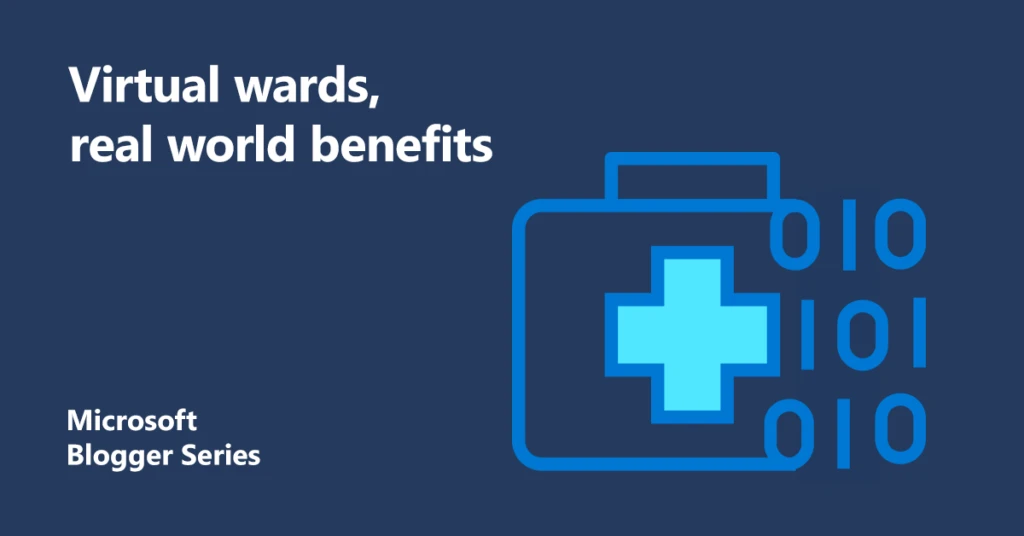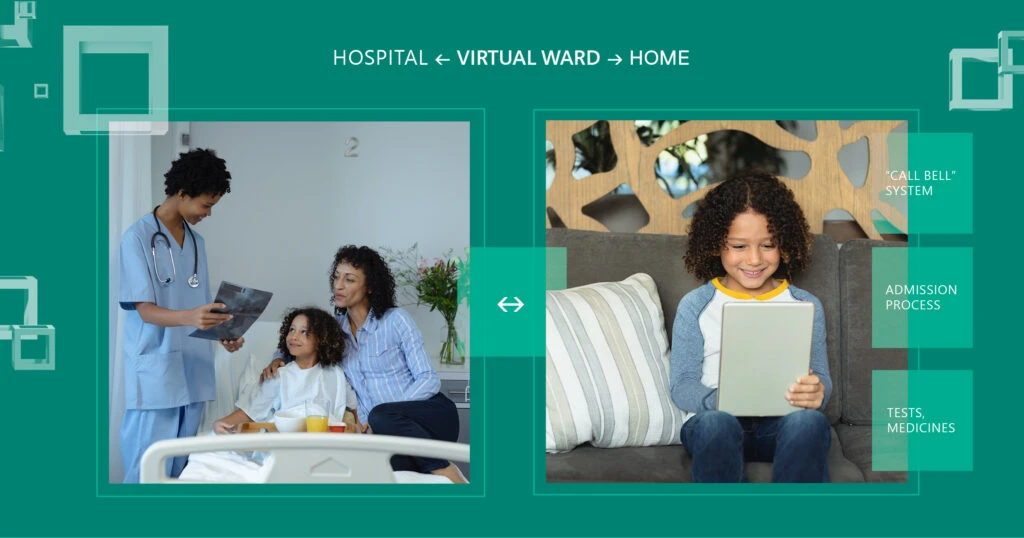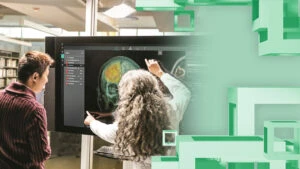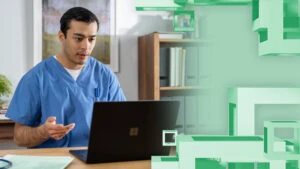
Virtual wards, real world benefits

Sometimes it takes a crisis to fully grasp an opportunity. Virtual wards were invented in the early 2000’s by Dr Geraint Lewis, now Director of Population Health at Microsoft. Despite that, it’s only in the last few years that they have taken the NHS by storm. Virtual wards help reduce hospital admissions, keep patients safer, and discharge them earlier in collaboration with social care where appropriate.
Watford General Hospital was an early adopter. They use remote monitoring technology to monitor patients’ symptoms and physiological parameters such as heart rate, level of oxygen saturation and temperature. Their app-based model proved overwhelmingly popular with staff and patients alike. In a survey conducted on behalf of the NHSE, 95 percent of patients found the application easy to use and 93 percent were pleased with the remote care service.
See virtual wards in action: NHSE Director of Digital Care Models Tara Donnelly shared a video showing how remote monitoring technologies supported over 78,000 people across England between November 2020 and May 2021.
Widespread remote care is closer than you think
COVID-19 may have been the catalyst, but the long-term potential of harnessing remote technology is clear. By the end of 2021, over 53 virtual wards were providing over 2,500 ‘beds’ nationwide. They support people with a range of conditions. From acute respiratory infections to urinary tract infections and chronic pulmonary disease to more complex presentations, such as people living with frailty.
The NHS is now spending up to £450 million to create at least 25,000 virtual ward beds over the next few years. They help increase capacity, efficiency and safety. Additionally, virtual wards allow health and care providers to: “Fully exploit remote monitoring technology and wider digital platforms to deliver effective and efficient care,” according to the latest operational and planning guidance from the NHS.
At Microsoft, we’re helping health and care providers harness technology to bring the hospital ward into the home. For example, the staff at Kendal Care Home in Cumbria have been using Microsoft’s HoloLens 2 and Microsoft Teams. This allows GPs to speak to and assess elderly residents in a COVID-safe way—something they’ve celebrated as a “game changer”.
Virtual wards: A hospital in every home?
There’s a reason why hospitals the world over are organised into wards. Now imagine making use of all the systems, staffing and daily routines of a hospital ward—developed and improved over decades—but in the patient’s home. That’s the power of a virtual ward. The point is that remote monitoring and communication technology are essential but not sufficient. To provide safe and effective care, you must apply these technologies within a robust framework. That’s why virtual wards mirror the structures and processes of their real-world counterparts, while replicating several core functions digitally.
Any virtual ward must include:
- Admission process—an easy to follow, step-by-step process to onboard new patients remotely.
- “Call bell” system—patients can call for help via a video conferencing and messaging app. There’s also failsafe backup arrangements in place.
- Regular observations—remote monitoring allows clinicians to keep an eye on each patient’s vital stats. Differing from patient to patient, these may include blood pressure, temperature, pulse, oxygen saturation, respiratory rate etc.
- Tests—patients can conduct blood, urine and other routine tests. These can be uploaded remotely under guidance from clinicians where required.
- Medicines—patients should receive instructions and prompts about which medicines to take, at what time, and can confirm what they’ve taken.
- Ward rounds—video conferencing enables a virtual ward team to review patients face-to-face
- Board rounds—remote whiteboard and productivity tools enable a virtual ward team to quickly review all the patients under their care
- Escalation—a streamlined process moves patients to a real hospital if their condition deteriorates.
- Engaging the support network—extend communication channels to friends and family and formal carers.
- Discharge process—a system for patients to leave their virtual ward and return to the care of their GPs.
Aside from the high level of care coordination, one of the main reasons why virtual wards are so popular with patients is all the above can be done while they sleep in their own beds—and enjoy their own food!
The potential of virtual wards is clear for all to see. At Microsoft, we’re excited to see how remote care evolves. Also, we’re proud to play a key role in supporting the nationwide roll out.
Find out more
Find out more about Microsoft Cloud for Healthcare
About the author

Umang is a Chief Clinical Information Officer at Microsoft with a passion for ensuring that technology delivers its full potential and value in healthcare. He is also a practising NHS paediatrician and has a background working across multiple sectors covering both payors and providers. Umang was a foundational member of start-up Babylon Health which had a successful IPO in 2021 on the New York Stock Exchange. With Microsoft, Umang is helping shape the digital transformation in health across the UK which is aiming for better outcomes through seamless integration and innovation.




